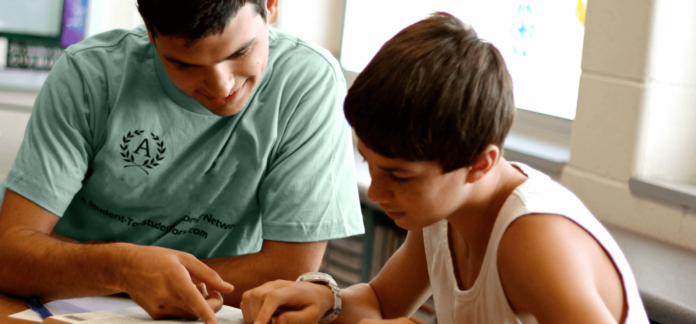Teacher and AI collaboration
AI has already been applied to education primarily in some tools that help develop skills and testing systems. As AI educational solutions continue to mature, the hope is that AI can help fill needs gaps in learning and teaching and allow schools and teachers to do more than ever before. AI can drive efficiency, personalization and streamline admin tasks to allow teachers the time and freedom to provide understanding and adaptability—uniquely human capabilities where machines would struggle. By leveraging the best attributes of machines and teachers, the vision for AI in education is one where they work together for the best outcome for students. Since the students of today will need to work in a future where AI is the reality, it’s important that our educational institutions expose students to and use the technology.
Differentiated and individualized learning
Adjusting learning based on an individual student’s particular needs has been a priority for educators for years, but AI will allow a level of differentiation that’s impossible for teachers who have to manage 30 students in each class. There are several companies such as Content Technologies and Carnegie Learning currently developing intelligent instruction design and digital platforms that use AI to provide learning, testing and feedback to students from pre-K to college level that gives them the challenges they are ready for, identifies gaps in knowledge and redirects to new topics when appropriate. As AI gets more sophisticated, it might be possible for a machine to read the expression that passes on a student’s face that indicates they are struggling to grasp a subject and will modify a lesson to respond to that. The idea of customizing curriculum for every student’s needs is not viable today, but it will be for AI-powered machines.
Universal access for all students
Artificial intelligence tools can help make global classrooms available to all including those who speak different languages or who might have visual or hearing impairments. Presentation Translator is a free plug-in for PowerPoint that creates subtitles in real time for what the teacher is saying. This also opens up possibilities for students who might not be able to attend school due to illness or who require learning at a different level or on a particular subject that isn’t available in their own school. AI can help break down silos between schools and between traditional grade levels.
Tutoring and support outside the classroom
Ask any parent who has struggled to help their teenager with algebra, and they will be very excited about the potential of AI to support their children when they are struggling at home with homework or test preparations. Tutoring and studying programs are becoming more advanced thanks to artificial intelligence, and soon they will be more available and able to respond to a range of learning styles.
There are many more AI applications for education that are being developed including AI mentors for learners, further development of smart content and a new method of personal development for educators through virtual global conferences. Education might be a bit slower to the adoption of artificial intelligence and machine learning, but the changes are beginning and will continue.
Analysis:
AI is another technology that, when incorporated into a classroom environment, can be immensely beneficial. This article presents a variety of applications for AI to supplement the instruction of an actual human teacher. AI would be able to help individualize learning in a way that is impossible for a single teacher with a class full of students. This could be especially applicable in the virtual school environment. AI could give each individual student challenges they are ready for and an overview of knowledge they are missing without the teacher needing to be physically present. It could also provide tutoring based on the student’s progress and be a solution to free up teachers for more important tasks. This concept would be applied to both in-person and virtual learning, which means methods of incorporating AI into education could be all-encompassing and long-lasting. It levels the playing field for all students and allows everyone to stay on the same page.




